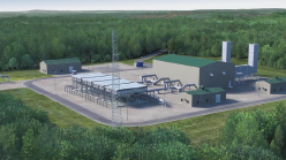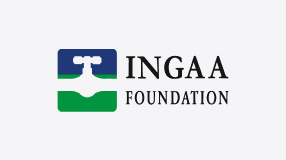Natural gas provides 25 percent of the basic energy needs in the U.S., but many consumers are unfamiliar with the pipeline industry that ships that natural gas. The 32 INGAA member companies that operate the 180,000-mile underground interstate natural gas pipeline system have been quietly, safely and reliably delivering natural gas to more than 175 million consumers all over North America for 100 years. The North American natural gas pipeline system is an energy highway that is the envy of the world.
Interstate moving gas from state to state natural gas transmission pipelines make up one of the four segments of the natural gas industry. Together, the natural gas industry makes it possible to heat homes and cook meals, for utilities to generate electricity and for American industry to do its work. The other industry segments – production and gathering, marketing and distribution- all work with the pipelines to get gas from wells in the Gulf of Mexico, Texas and Oklahoma, the Intermountain West and Western and Eastern Canada to consumers.
The nation’s natural gas interstate pipeline system is a vital component of the commodity transportation network in the United States. Interstate pipelines moving gas within a state transport a significant portion of the natural gas produced and imported into the United States.1 Intrastate pipelines transport a considerable volume of natural as well. From its simple beginnings in the 1800s when manufactured gas was transported through bored-out logs in a few select cities, the natural gas transportation industry has evolved into a sophisticated network of underground and aboveground pipelines crisscrossing the country. This transportation network consists of approximately 278,269 miles of transmission natural gas pipelines.2 Interstate natural gas pipelines compose of a majority of this mileage. Safety and safety communications for interstate natural gas pipelines is regulated by the Office of Pipeline Safety (OPS) within the Department of Transportation (DOT). In addition, new interstate pipelines must be certificated by the Federal Energy Regulatory Commission (FERC) and pipeline companies must abide by public communication rules developed by FERC.
Natural gas pipelines that distribute natural gas directly to end users are primarily intrastate pipelines, and are generally regulated by the states in which they are located. In most cases, the individual states have adopted the OPS regulations.
Residential and commercial customers depend on natural gas as a reliable source for cooking and heating, and commercial and industrial customers rely on natural gas for heating and industrial feedstock purposes. Natural gas is the predominant fuel source for new generation of electricity because of its low installed cost and environmental benefits. Industry and government officials estimate that the nation’s use of natural gas will rise by more than 50 percent, to more than 30 trillion cubic feet by as early as 2010.
Public safety has always been a concern for operators of natural gas pipeline systems. Pipeline operators take their responsibilities for safety very seriously. Natural gas is a volatile substance, and, as with any mode of transportation, accidental releases sometimes occur. These releases often are quickly discovered and addressed before major damage occurs. However, on very rare occasions an accidental release may result in afire such as occurred in Carlsbad, NM. Incidents such as this have increased attention on the natural gas pipeline industry and on improving the safety of the nation’s pipeline network.
Much of the interest surrounding pipeline safety has centered on improving risk communication to the public, better coordination with local emergency authorities and better public access to pipeline information, such as the results of integrity inspections to assess safety performance. OPS regulations require pipeline operators to conduct public information campaigns, to maintain lines of communication with public officials and to coordinate with local emergency management officials. However, there is a strong push to require a higher level of public coordination and to provide greater degree of access to pipeline safety information than currently exists. Pipelines have been improving their communication practices in various areas, including communications regarding risk, performance metrics that measure natural gas pipeline company safety performance, the benefits of natural gas and better information flow between the pipeline companies and the communities in which they operate. The industry acknowledges that further improvements are needed and is working with OPS to make these improvements. Further, the industry is interested in developing more coordinated approaches among companies so that natural gas pipelines collectively can improve their interactions with the public and – so that there efforts are easily recognized by the public and the decision makers.
The natural gas pipeline industry has spent millions of dollars improving the safety of its pipelines and coordinating public information and education campaigns.3 Even though there is documentation indicating that natural gas pipeline transmission is the safest mode of commodity transportation, the natural gas pipeline industry recognizes it must improve its efforts to more effectively communicate pertinent safety information to the public. An enhanced information/communication program will attempt to provide a number of benefits, including elevating the public’s base level of understanding about natural gas pipelines, the on-going safety activities, the benefits of natural gas to society, and the steps that the industry and safety officials within the community take to reduce risk.
This report provides background and supporting information to assist the industry, the public and government decision-makers in developing a coordinated, comprehensive information and community relations programs for the natural gas pipeline industry.





